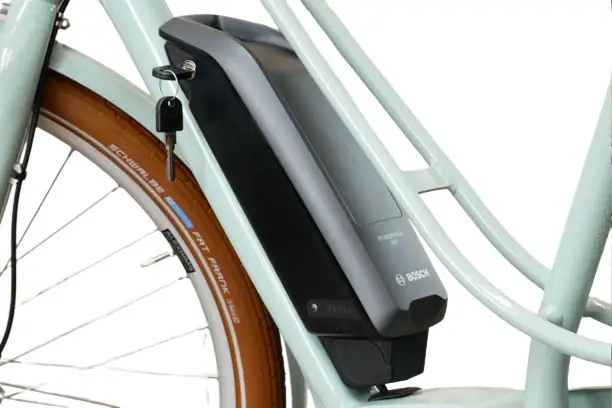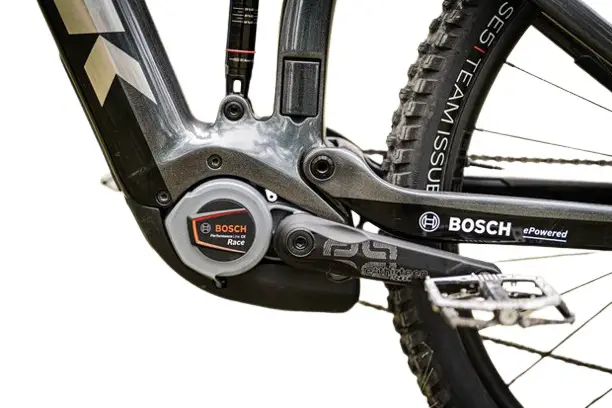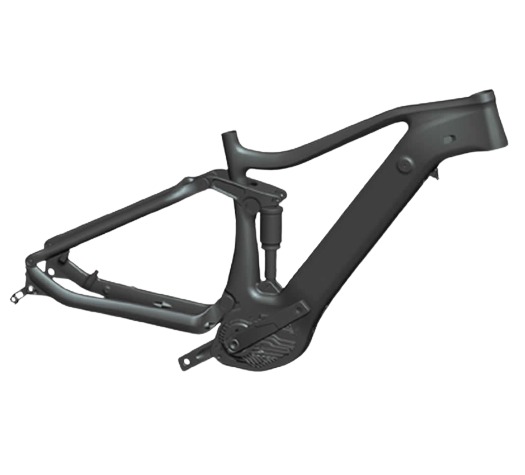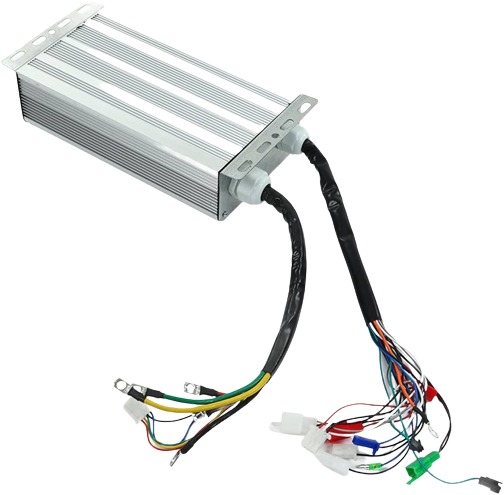Electric bikes have gained significant popularity in recent years because they offer a unique and efficient mode of transportation. However, one common question that arises is why are electric bikes so expensive.
In this comprehensive blog post, we will delve into the factors that contribute to the high cost of electric bikes and explore the reasons behind their expense.
- Also Read: How to Transport E-Bikes?
- Also Read: How to Ride an E-Bike?
- Also Read: How Fast Are E-Bikes?
- Also Read: How to Start E-Bike Without Key?
The Rising Demand for Electric Bikes
One of the primary factors that contribute to the high cost of electric bikes is the increasing demand for these vehicles. As more people recognize the benefits of electric bikes, the demand for them has surged.
This high demand creates a supply and demand imbalance, allowing manufacturers and retailers to set higher prices. Additionally, limited production capacity and a shortage of components can further drive up the cost of electric bikes.
The Components That Make Electric Bikes Expensive
Electric bikes consist of several components that differentiate them from traditional bicycles. These components, such as the battery, motor, frame, electronic controller, and high-quality parts, contribute to the overall cost of the bike. Let’s explore each of these components in detail.
The Battery: The Heart of an Electric Bike

The battery is one of the most crucial and expensive components of an electric bike. It typically accounts for 30% to 40% of the total bike’s price. The battery is responsible for providing the necessary electrical power to the motor, allowing the bike to operate.
Lithium-ion batteries are commonly used in electric bikes due to their lightweight and long-lasting properties. However, the intricate construction and costly materials required to ensure stability, weather resistance, and longevity contribute to the overall cost of the bike.
The Motor: Powering the Electric Bike

Another significant component that adds to the cost of electric bikes is the motor. Unlike traditional bicycles, electric bikes incorporate a motor that assists the rider while pedaling.
The motor converts electrical power from the battery into mechanical power, providing an extra boost to the rider. The design, manufacturing, and integration of the motor into the bike require specialized expertise and precision, increasing the overall cost of the bike.
The Frame: Durability and Weight Optimization

The frame of an electric bike plays a vital role in ensuring stability and durability. Electric bikes generally have heavier frames compared to traditional bicycles due to the additional components they accommodate, such as the battery and motor.
The frame must be robust enough to support the rider’s weight and withstand the increased forces exerted by the motor. High-quality frames, often made from lightweight aluminum or carbon fiber, contribute to the overall cost of the bike.
The Electronic Controller: Controlling Power and Speed

The electronic controller serves as the brain of the electric bike, regulating the flow of power between the battery and the motor. It controls the speed of the electric motor and acts as a brake when the rider applies the brakes.
The electronic controller also provides important information to the rider, such as speed and battery status. The complexity of the electronic controller and its integration into the bike’s system contribute to the overall cost.
High-Quality Components: Ensuring Reliability and Performance
Electric bikes require high-quality components to ensure reliability, performance, and safety. These components include brakes, gears, tires, suspension, and other parts that support the rider’s weight, handle the increased speed, and provide a smooth riding experience.
The use of high-quality components adds to the overall cost of the bike but ensures a superior riding experience and longevity.
Supply and Demand Dynamics
The relatively new market for electric bikes, combined with the increasing demand, creates a supply and demand imbalance that affects the cost. Limited production capacity and a shortage of components can lead to higher manufacturing costs.
These higher costs are ultimately passed on to the consumer. However, as the market matures and production capacities increase, economies of scale may lower the cost of electric bikes in the future.
Additional Costs and Considerations
In addition to the initial purchase price, there are ongoing costs to consider when owning an electric bike. These costs include charging the battery, battery replacements after a certain number of charging cycles, regular maintenance, and potential repair expenses. It is important to factor in these costs when evaluating the overall affordability of an electric bike.
Tax Incentives and Long-Term Savings
While the upfront cost of electric bikes may seem daunting, it is essential to consider the potential long-term savings and tax incentives. Electric bikes can significantly reduce transportation expenses, such as fuel costs and parking fees.
Additionally, some governments offer tax incentives or subsidies to encourage the adoption of electric bikes as a sustainable mode of transportation. These incentives can help offset the initial expense and make electric bikes more affordable in the long run. Read more about e-bike rebates and tax incentives.
The Future of Electric Bike Pricing
As technology continues to advance and the market for electric bikes expands, it is expected that the cost of electric bikes will gradually decrease.
Increased competition, improved manufacturing processes, and advancements in battery and motor technology can contribute to lowering the overall cost. Furthermore, as the demand for electric bikes becomes more widespread, economies of scale may lead to more affordable pricing.
Will the Cost of Electric Bikes Go Down?
The COVID-19 pandemic has boosted the demand for electric bicycles, which are now more popular than ever. However, the high prices of e-bikes may deter some potential buyers. But don’t worry, e-bikes are still a great option for you if you want to save money and the environment.
E-bikes are not only cheaper to run than petrol-powered bikes, but they also have tax benefits in some countries. You can also enjoy the convenience of cycling without worrying about gas or maintenance costs.
Electric bikes are becoming more accessible and affordable as technology improves and becomes more widespread. Many cities are also investing in bike infrastructure to make it easier for e-bike riders and other cyclists to travel around.
If you are looking for a way to get around that is healthy, fun, and eco-friendly, an e-bike might be the perfect choice for you!
Why Get an Electric Bike?
Electric bikes have surged in popularity for several compelling reasons. These two-wheeled wonders combine the familiar benefits of traditional pedal-powered bicycles with some exciting enhancements. Let’s delve into what makes e-bikes so remarkable:
- Battery-Powered Assistance: E-bikes are equipped with a battery-powered motor that kicks in when you pedal. Whether you are starting from a standstill or cruising along, this motor provides a helpful boost. It is like having a friendly breeze at your back, especially when conquering challenging inclines.
- Tackling Hills with Ease: Those steep hills that used to leave you breathless? Not anymore! E-bikes effortlessly carry you uphill, making those once-daunting climbs feel like a leisurely ride through the park.
- Muscle-Friendly Commutes: If you are a regular cyclist commuting to work or zipping around town, e-bikes are a game-changer. They prevent muscle strain and fatigue, allowing you to pedal more frequently without feeling drained. Say goodbye to sweaty, exhausting rides!
- Extended Range: With an e-bike, your adventures know no bounds. You can cover greater distances before fatigue sets in. Whether it is exploring your neighborhood or embarking on longer rides, e-bikes keep you rolling efficiently.
In short, electric bikes are the modern commuter’s best friend—a blend of convenience, eco-friendliness, and sheer fun. So hop on, pedal, and let the motor do the rest!
Electric Bikes vs. Standard Bicycles
If you compare a regular bike and an e-bike, you might notice some obvious similarities and differences at first glance. They both have two wheels and a sturdy frame that let you ride quickly and easily from one place to another – as long as they are not too far apart.
But if you look more closely, you will see that the e-bike has some extra features that make it stand out from the regular bike. It has a motor, a battery, and other components that work together to power the e-bike and make it run smoothly.
Can you see the difference?
These additional features are what make the e-bike more than just a bike. They are also the main reason why the e-bike costs much more than the regular bike.
How Much Do Electric Bicycles Cost?
The cost of electric bicycles (e-bikes) can vary significantly based on factors such as brand, features, and quality. Here’s a general breakdown:
- Budget Range: Entry-level e-bikes typically start around $600. These bikes may have basic components and lower power output.
- Mid-Range: For a decent e-bike suitable for daily commuting, expect to pay around $1,250 to $3,000. These bikes strike a good balance between affordability and quality.
- Mountain E-Bikes: If you are into mountain biking, the standard price range for e-mountain bikes is $2,000 to $3,000. These models are designed for off-road adventures and offer better suspension and durability.
- High-End Models: High-performance e-bikes with advanced features can go well beyond the $5,000 mark. Some luxury e-bikes even exceed $10,000 and offer top-notch quality, cutting-edge technology, and premium components.
Remember that investing in a higher-priced e-bike often translates to better performance, longer battery life, and an overall more enjoyable riding experience. Choose based on your needs, preferences, and budget!
Why Are Electric Bikes So Expensive?
The battery, motor, electronics, and engineering of an e-bike contribute to its higher production cost compared to an average bicycle. Additionally, the frame design and extra components (such as racks, saddle size, throttle, sensors, lights, and high-quality locks) further increase the overall expense.
Notably, premium brands like Shimano, Yamaha, and Bosch offer models equipped with powerful motors and advanced batteries, which naturally escalates the price of their products.
As a prospective buyer, it is crucial to assess your riding experience level and consider the type of riding you intend to do with your e-bike. Next, prioritize the components that significantly impact your riding experience.
Remember that the ideal e-bike for commuting may differ in features from the best electric mountain bike. Rather than overspending, focus on selecting the right features that align with your needs.
How Much Do Electric Bike Batteries Cost?
The battery constitutes the most significant expense in an e-bike, typically accounting for 30-40% of the total bike cost. This cost can vary from a few hundred dollars to over $1,000. While larger batteries come with a higher price tag, they also enable riders to cover greater distances on their e-bikes.
Why are Electric Bike Batteries So Expensive?
Batteries used in electric bicycles incorporate premium materials and undergo intricate construction to maximize longevity and withstand various environmental conditions. These batteries work with the motor to efficiently power the bike, but this sophisticated engineering comes at a cost.
The battery type significantly impacts its shelf life—the number of charging cycles it can complete from 0% to 100%. Most electric bikes utilize Lithium-ion batteries, which typically have a shelf life of 2-4 years and can handle up to 1,000 charging cycles.
Despite their compact size and reduced weight, these batteries maintain comparable efficiency to their less expensive counterparts.
Are Electric Bikes Expensive to Maintain?
No, maintaining an electric bike is comparatively affordable. You will perform routine maintenance similar to that of a regular bicycle. The primary distinction lies in the battery replacement, which typically occurs every 3 to 4 years.
Beyond that, it involves regular upkeep—keeping the chain, tires, hub, and gears clean and well-maintained, much like caring for a standard bike.
Electric Bikes Are a Niche Market
The cost of the components of the electric bikes is a major factor in their overall price, but another significant factor is that they are not widely available.
These bikes have only gained popularity among consumers in recent years, but they still remain a niche market. This low demand means that companies can charge higher prices, increasing costs even more.
Many manufacturers are unable to produce products in large quantities, which also adds to the expense. This reduces their ability to benefit from economies of scale, which are the cost savings that result from mass production of products.
Traditional bikes can be produced in large quantities and at lower costs, leading to lower prices for manufacturers.
Moreover, due to the low popularity of these bikes, there are not many manufacturers on the market today. This means that there is less competition for manufacturers to offer better prices.
Hopefully, with the rise in popularity in recent years, there will be more competition and better pricing.
Choosing Your Electric Bike
If you are planning to buy an electric bike, it is worth considering a more expensive option. While there is a chance that prices may decrease over the next few years, it is not guaranteed.
Now is a good time to invest in your bike if your budget allows. Higher-priced bikes are typically crafted from premium materials and tend to be lighter. However, don’t discount mid-range or even lower-priced bikes—they can still offer excellent performance.
The key lies in researching reviews, understanding the manufacturer’s reputation, and making an informed decision based on your personal budget.
To understand what each price range translates to in the world of electric bikes, let’s break it down:
$1000 Electric Bikes
These e-bikes fall into the entry-level category and represent the more affordable end of the electric bike price spectrum. Typically, these bikes come equipped with lower-end components, which may affect their durability compared to pricier alternatives. Additionally, the frame is commonly constructed from aluminum, resulting in a slightly heavier overall weight. Check out these e-bikes under $1000.
$2000 Electric Bikes
These electric bikes are a good choice for beginners who want to save money and get a durable bike. These bikes usually have decent components, but not the best ones. They are also more sturdy, have longer-lasting batteries, and come with extra accessories. Check out these e-bikes under $2000.
$3000 Electric Bikes
These electric bikes are an excellent choice for almost any rider. They not only feature top-quality components but also have an appealing design. Many of these bikes are crafted from carbon, which makes them lighter, and they showcase well-executed welds.
Additionally, in this price range, you can find electric cargo bikes or e-bikes with seating arrangements over the back wheel, allowing you to carry an additional rider.
$4000 Electric Bikes
These electric bikes are the epitome of cosmetic elegance, boasting additional carbon fibers and enticing perks. They incorporate the best components and may even include exclusive electronics not found in others. Designed for longevity, they are an excellent choice for riders with a generous budget who seek more than just basic functionality.
These cutting-edge e-bikes are perfect for flaunting, although they might not be the most practical option for everyday bike commuters and cycling enthusiasts.
Conclusion
In conclusion, the high cost of electric bikes can be attributed to factors such as the demand-supply dynamics, the cost of specialized components like the battery and motor, high-quality materials, and ongoing technological advancements.
While the upfront cost may seem expensive, it is important to consider the long-term savings, tax incentives, and environmental benefits that electric bikes offer.
As the market continues to mature and technology advances, it is likely that electric bikes will become more affordable, making them a viable and cost-effective mode of transportation for a wider range of individuals.